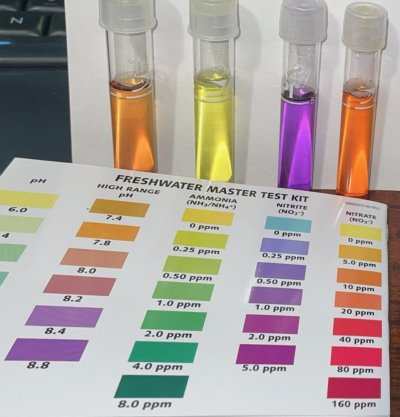It might be my eyes deceiving me but comparing the 2 images of the 2 sets of vials, there's slightly different water levels, especially on the ph and nitrates.
Just a small tip. Get an intravenous needle vial. (Remove the needle) The measuring vial on the needle makes it much easier when trying to get the correct amount of liquid into the testing vials.
Other than that, keep doing what you are doing. Mistakes happen but as long as you do your best to fix them, you're doing a good job.
Take it one step at a time. Once the cycle has done it's business, then worry about any stocking issues (as you may have some unfortunate casualties, you won't know what stock you'll have until you get through this stage).


